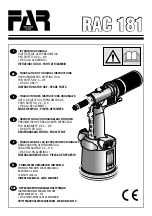
Installing network components in cabinets
3.3 Guidelines for setting up networked automation systems in buildings
Passive network components
100
System Manual, 02/2013, C79000-G8976-C282-01
3.3.7.3
Cabling within closets
Cabling within closets
When running cables within cubicles and cabinets, remember the following rules:
●
Install the cables in metallic, electrically conductive cable channels.
●
Screw the cable channels to the struts of the rack or cubicle walls approximately every 50
cm making lowresistance and lowinductance contact.
●
Separate the cables according to the categories as shown in table 1-1.
●
Maintain the minimum clearance between the cables of different categories as explained
in table 1-1. In general, the risk of interference due to crosstalk is less the greater the
clearance between the cables.
●
Where cables of different categories cross, they should cross approximately at right
angles (wherever possible avoid sections where the cables run parallel).
●
The shields of all cables entering the wiring closet should make largearea contact with
closet ground as close as possible to the point of entry.
3.3.7.4
Cabling within buildings
Cabling within buildings
When laying cables outside cabinets but within buildings, note the following points:
●
Install the cables in metallic, electrically conductive cable channels.
●
Include the metal cable channels and racks in the bonding system of the building or plant.
Note the information on equipotential bonding in Section 1.3 in this manual.
●
Separate the cables according to the categories as described in table 11 and run the
various categories in their own channels/racks.
●
If there is only one common metal channel available for all categories, either the
clearances shown in Table 11 must be maintained or the individual categories should be
separated from each other by metallic partitions. The partitions must be connected to the
channel making lowresistance and lowinductance contact.
●
Cable racks should cross each other at right angles.







































